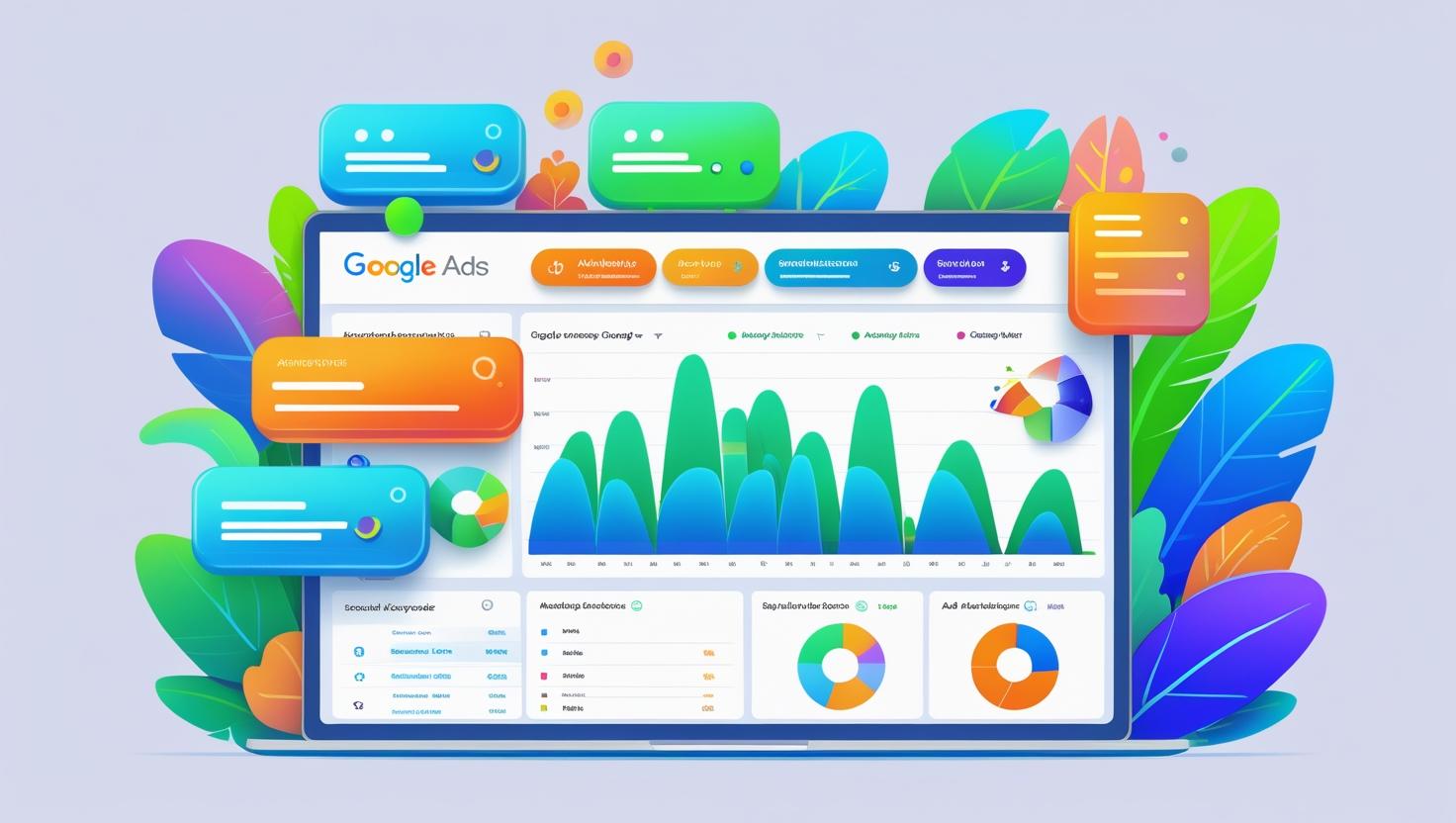You’ve launched your first Google Ads campaign and you’re staring at that keyword field wondering: “How many keywords should I actually use?” It’s like standing in front of a buffet — do you load up your plate with everything or stick to a few carefully chosen favorites?
Here’s the thing: most advertisers get this completely wrong. They either stuff their campaigns with hundreds of keywords thinking “more is better” or they play it too safe with just two or three terms. Both approaches can drain your budget faster than a leaky faucet.
The truth? The optimal number of keywords for Google Ads isn’t a magic number — it’s a strategic balance that depends on your goals, budget, and campaign structure. But don’t worry. I’ll walk you through everything you need to know to make smart keyword decisions that actually drive results.

Why the Number of Keywords You Choose Actually Matters
Before we dive into the specifics of how many keywords per ad group you should use, let’s talk about why this question keeps advertisers up at night.
Every keyword in your campaign is like a fishing line cast into Google’s massive ocean of searches. Cast too many lines and you’ll struggle to manage them all effectively. Cast too few and you might miss the big catch swimming right past you.
Google processes over 8.5 billion searches daily, and about 15% of those searches are completely unique — meaning they’ve never been searched before. This creates both an opportunity and a challenge for your Google Ads keyword strategy.
The opportunity? You can tap into this massive search volume. The challenge? You need to be strategic about which keywords deserve your attention and budget.
The Sweet Spot: How Many Keywords Should You Use for Google Ads?
Here’s what most Google Ads keyword best practices guides won’t tell you upfront: 5 to 10 keywords per ad group is the goldilocks zone for most campaigns.
This isn’t some arbitrary number I pulled from thin air. It’s based on years of campaign optimization data and here’s why it works:
With 5-10 keywords, you can:
- Maintain tight thematic relevance within each ad group
- Write compelling ad copy that speaks to all keywords in the group
- Monitor performance without drowning in data
- Optimize bids effectively without spreading your budget too thin
But here’s where it gets interesting — the keyword limit in Google Ads isn’t about Google’s technical restrictions (you can actually add thousands of keywords). It’s about your ability to manage them effectively.
Think of it like juggling. Sure, you might be able to keep 20 balls in the air for a few seconds, but you’ll have much better control and performance with 5-7 balls that you can actually manage properly.
Understanding Keyword Match Types in Google Ads
Before you start building your keyword list, you need to understand keyword match types in Google Ads. This is where many advertisers trip up — they focus on quantity without considering match type strategy.
Broad Match keywords cast the widest net. If you use broad match for “running shoes,” your ads might show for searches like “best athletic footwear” or “marathon training gear.” One broad match keyword can effectively capture dozens of related searches.
Phrase Match gives you more control. Your ads will show for searches that include your keyword phrase in the same order, but with additional words before or after.
Exact Match is the most restrictive, showing your ads only for searches that match your keyword exactly (or very close variations).
Here’s the key insight: if you’re using broad match keywords, you might only need 3-5 keywords per ad group because each one will capture multiple search variations. But if you’re using exact match, you might need 8-12 keywords to cover the same search territory.
The Hidden Dangers of Using Too Many Keywords
What happens when you ignore the optimal number of keywords for Google Ads advice and stuff your campaigns with every keyword you can think of?
Your Quality Score tanks. Google’s Quality Score algorithm looks at the relationship between your keywords, ads, and landing pages. When you have 50+ loosely related keywords in one ad group, it’s nearly impossible to create ad copy that’s relevant to all of them.
You create keyword cannibalization. This is when your own keywords compete against each other. Imagine bidding on both “dog beds” and “doggie beds” in the same campaign — you’re essentially bidding against yourself, driving up costs while confusing Google’s algorithm about which ad to show.
Your budget gets spread too thin. Instead of concentrating your spend on high-performing keywords, your budget gets diluted across dozens of terms, many of which might never generate a single click.
I’ve seen campaigns with 200+ keywords per ad group that were burning through $500+ daily with zero conversions. After restructuring them into focused groups of 5-8 keywords each, the same budget started generating 15-20 leads per week.
Google Ads Keyword Research: Building Your Foundation
Smart keyword selection for PPC campaigns starts with understanding your customer’s journey. You need to think like a detective, uncovering not just what people search for, but why they search for it.
Start with Google’s Keyword Planner — it’s free and gives you search volume data straight from the source. But don’t stop there. Tools like SEMrush, Ahrefs, and Ubersuggest can reveal competitor keywords and search trends you might miss.
Here’s a strategic approach:
First, identify your seed keywords — the obvious terms your customers might use. If you sell organic dog food, your seeds might be “organic dog food,” “natural dog food,” and “healthy dog food.”
Next, expand each seed into related terms. For “organic dog food,” you might add “organic dog food brands,” “best organic dog food,” “organic dog food reviews,” and “where to buy organic dog food.”
Finally, analyze search intent. Someone searching “organic dog food brands” is probably researching options, while someone searching “buy organic dog food online” is ready to purchase. Group keywords with similar intent together.
Long-tail vs. Short-tail Keywords for PPC: The Strategic Balance
Your keyword portfolio should include both long-tail and short-tail keywords, but the ratio matters more than you think.
Short-tail keywords like “dog food” have massive search volume but fierce competition. They’re expensive and often too broad to convert well. It’s like trying to catch fish with a net the size of a football field — you’ll catch something, but most of what you get won’t be what you’re looking for.
Long-tail keywords like “grain-free organic dog food for senior dogs” have lower search volume but much higher purchase intent. They’re like using a specialized lure that only attracts exactly the fish you want to catch.
My recommended mix: 20-30% short-tail keywords for visibility and 70-80% long-tail keywords for conversions. This balance gives you both reach and relevance.

Keyword Grouping Strategies for Google Ads That Actually Work
How to choose the right keywords for Google Ads isn’t just about picking the right terms — it’s about organizing them strategically.
Think of your ad groups like departments in a store. You wouldn’t put dog toys next to cat litter just because they’re both pet products. Similarly, your keywords need logical groupings that make sense to both Google and your potential customers.
Create themed ad groups around specific products or services. If you sell fitness equipment, you might have separate ad groups for “treadmills,” “dumbbells,” and “yoga mats” — each with its own set of 5-10 highly relevant keywords.
Use the “ad copy test” to validate your groupings. If you can’t write a single ad that’s relevant to all keywords in a group, split them up. Your ad copy should speak directly to every keyword in the group.
Consider user intent when grouping. Keywords like “buy treadmill” and “treadmill reviews” serve different purposes in the customer journey and should live in separate ad groups with tailored ad copy.
Quality Score and Keyword Relevance: The Performance Connection
Here’s something that might surprise you: Google cares more about keyword relevance than keyword quantity. A campaign with 30 highly relevant keywords will almost always outperform one with 300 loosely related terms.
Quality Score measures how well your keywords align with your ads and landing pages. Higher Quality Scores mean lower costs and better ad positions — it’s Google’s way of rewarding relevance.
Three factors drive Quality Score:
- Expected click-through rate (how likely people are to click your ad)
- Ad relevance (how closely your ad matches the search intent)
- Landing page experience (how relevant and useful your landing page is)
When you use too many keywords per ad group, it becomes nearly impossible to optimize all three factors effectively. But with 5-10 carefully chosen keywords, you can create laser-focused campaigns that Google rewards with better performance and lower costs.
The Power of Negative Keywords in Google Ads
While we’re talking about how many keywords should you use for Google Ads, we can’t ignore the keywords you should exclude. Negative keywords are your campaign’s bouncer — they keep irrelevant traffic out so you can focus your budget on qualified prospects.
Add negative keywords proactively based on your keyword research. If you sell premium dog food, add “free” and “cheap” as negatives to avoid clicks from bargain hunters who won’t convert.
Review search terms reports weekly to identify new negative keyword opportunities. This report shows exactly what people searched for when your ads appeared, revealing irrelevant terms you should exclude.
Use different negative keyword match types strategically. Broad match negatives cast a wide net, while exact match negatives give you surgical precision.
Advanced Google Ads Keyword Optimization Techniques
Once you’ve mastered the basics of keyword selection for PPC campaigns, these advanced strategies can take your performance to the next level.
Implement keyword bid modifiers based on performance data. If “organic dog food” converts better on mobile devices, increase your mobile bid modifier for that keyword.
Use audience targeting to refine keyword performance. The same keyword might perform differently for new visitors versus returning customers, so adjust your targeting accordingly.
Test different keyword variations systematically. “Dog food organic” and “organic dog food” might seem identical, but they could have different search volumes and competition levels.
Leverage seasonal trends in your keyword strategy. Pet supply keywords often peak during holidays when people buy gifts for their furry friends.
Keyword Bidding Strategies That Maximize ROI
Your keyword bidding strategies should align with your campaign goals and keyword performance. Not all keywords deserve the same bid — some are superstars that drive conversions, while others are supporting actors that build awareness.
Start with automated bidding strategies like Target CPA or Target ROAS to let Google’s machine learning optimize bids based on conversion likelihood. These strategies work best when you have enough conversion data for the algorithm to learn from.
Use manual bidding for precise control over high-value keywords. If a specific keyword consistently drives qualified leads, you might want to bid more aggressively to ensure top placement.
Implement bid adjustments for different scenarios. Increase bids during peak business hours, decrease them for mobile users if they don’t convert well, or boost them for specific locations.
Measuring Success: Google Ads Keyword Performance Metrics
Google Ads keyword performance metrics tell the story of your campaign’s success or failure. But which metrics actually matter?
Click-through rate (CTR) measures how compelling your ads are to searchers. A low CTR might indicate poor keyword-to-ad relevance or weak ad copy.
Conversion rate reveals how well your keywords attract qualified traffic. High-converting keywords deserve more budget and attention.
Cost per conversion shows the efficiency of your keyword spending. Keywords with low conversion costs are typically your best performers.
Impression share indicates how often your ads appear for relevant searches. Low impression share might mean you need higher bids or better Quality Scores.
Search term reports reveal the actual queries triggering your ads, helping you identify new keyword opportunities and negative keywords.
Common Keyword Mistakes That Kill Campaign Performance
Even experienced advertisers make these Google Ads keyword strategy mistakes that can devastate performance:
Mixing different match types carelessly creates internal competition and budget waste. If you have both broad match “dog food” and exact match [dog food] in the same campaign, they might compete against each other.
Ignoring search intent leads to poor conversions. Someone searching “dog food ingredients” probably wants information, not to make a purchase, so they shouldn’t see your shopping ads.
Over-optimizing too quickly based on limited data can hurt performance. Give keywords time to accumulate meaningful data before making major changes.
Neglecting mobile optimization ignores the fact that mobile searches often have different intent and behavior patterns than desktop searches.
The Future of Google Ads Keyword Strategy
As Google’s AI becomes more sophisticated, the question of how many keywords should you use for Google Ads continues to evolve. Smart Bidding and responsive ads are changing how keywords function in campaigns.
Machine learning is making broad match keywords more effective at finding relevant traffic, potentially reducing the number of exact match keywords you need.
Audience signals are becoming as important as keywords in targeting the right people, shifting focus from keyword quantity to audience quality.
Performance Max campaigns are automating much of the keyword selection process, though understanding keyword principles remains crucial for success.
Frequently Asked Questions
What’s the ideal keyword count for Google Ads campaigns?
The ideal number is 5-10 keywords per ad group, allowing for tight relevance and effective management. This gives you enough variety to capture different search variations while maintaining focus for ad copy and landing page optimization.
Does using more keywords improve Google Ads performance?
No, using more keywords doesn’t automatically improve performance. In fact, too many keywords often hurt performance by diluting relevance and making optimization difficult. Quality and relevance matter more than quantity in Google Ads success.
How do I avoid keyword overlap in Google Ads?
Prevent keyword overlap by using Google’s Keyword Planner to check for conflicts, organizing similar keywords into the same ad group, and using negative keywords to prevent unwanted matches. Regular search term report reviews help identify and resolve overlap issues.
Your Next Steps to Google Ads Keyword Success
The optimal number of keywords for Google Ads isn’t about hitting a magic number — it’s about finding the strategic balance that works for your specific business goals, budget, and market.
Start with 5-10 carefully researched keywords per ad group. Focus on relevance over volume. Monitor performance metrics closely and adjust based on real data, not assumptions.
Remember, successful Google Ads keyword optimization is an ongoing process, not a one-time setup. Your keyword strategy should evolve as you gather performance data, understand your audience better, and adapt to market changes.
The key to PPC success isn’t using the most keywords — it’s using the right keywords effectively. Focus on quality, relevance, and strategic organization, and your campaigns will reward you with better performance and lower costs.
Ready to transform your Google Ads performance? Start by auditing your current keyword structure using the strategies we’ve covered. Your bottom line will thank you.





